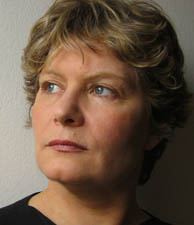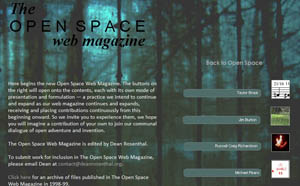
On Tuesday 1/11, newish New York vocal ensemble Ekmeles presents a program of music by Martin Iddon, Alvin Lucier, and David Lang at The Tank. I caught up with Ekmeles’ director, baritone Jeff Gavett to learn more about the event.
Carey: Why did you form the group Ekmeles?
Gavett: “While New York is home to many exceptional instrumental groups dedicated to contemporary music, there is a relative paucity of new vocal music. Ekmeles was created to fill the gap, and bring adventurous new music for solo voices to audiences that otherwise have little or no chance to hear it.”
“Our first season so far has included a US premiere by Mauricio Kagel, New York premieres by Aaron Cassidy and Kenneth Gaburo, and new commissions by Troy Herion and Jude Traxler. We also performed as the vocal complement in a sold out performance of Knee Plays from Einstein on the Beach as part of the Darmstadt Essential Repertoire series at Issue Project Room.”
Carey: Tell us about the works on the concert?
Gavett: “First on the program is our commission, Martin Iddon’s Ἁμαδρυάδες (hamadryads). It’s a transformation of Josquin’s Nymphes des Bois which involves retuning the intervals of the original in chains of Pythagorean intervals. These pitches, notated to the hundredth of a cent, are traversed mostly through extremely slow glissandi, requiring the singers to use sine wave reference tracks to achieve the tuning. We’ll also be playing tuned wine glasses, which blend eerily with the vocal textures.”
“Next is Alvin Lucier’s Theme, a setting of a poem by John Ashbery which shares some kinship with his most famous work. Lucier fragments the poem and distributes it between four speakers, who read the text into what he calls “resonant vessels.” These are vases, milk jugs, any empty container into which is placed a miniature microphone, which picks up the sound of the voice as filtered by the vessel, much like the room filters the sound of Lucier’s voice in I am sitting in a room.”
“David Lang’s the little match girl passion rounds out the program. As the title suggests, Lang has taken Hans Christian Andersen’s moralistic children’s story and infused it with the Passion. The suffering and death of a poor little girl is thus directly and explicitly equated to that of Christ, amplifying the story’s emotional impact. The singers all play percussion instruments, and the glockenspiel is featured especially prominently, its crisp attack evoking the freezing night. The clear and sparse textures throughout the match girl text are contrasted beautifully with richer quasi-choral textures in the Passion-derived elements.”
Carey: What’s next for Ekmeles?
Gavett: “Upcoming performances include John Cage’s Song Books at the Avant Music Festival on February 12th, and Chris Cerrone’s Invisible Cities with Red Light New Music in May.”
Concert Details
Tuesday, January 11th, 2011, 7 PM – Ekmeles – Resonances
$10 admission
The Tank
345 W 45th St, Manhattan, NY 212-563-6269

